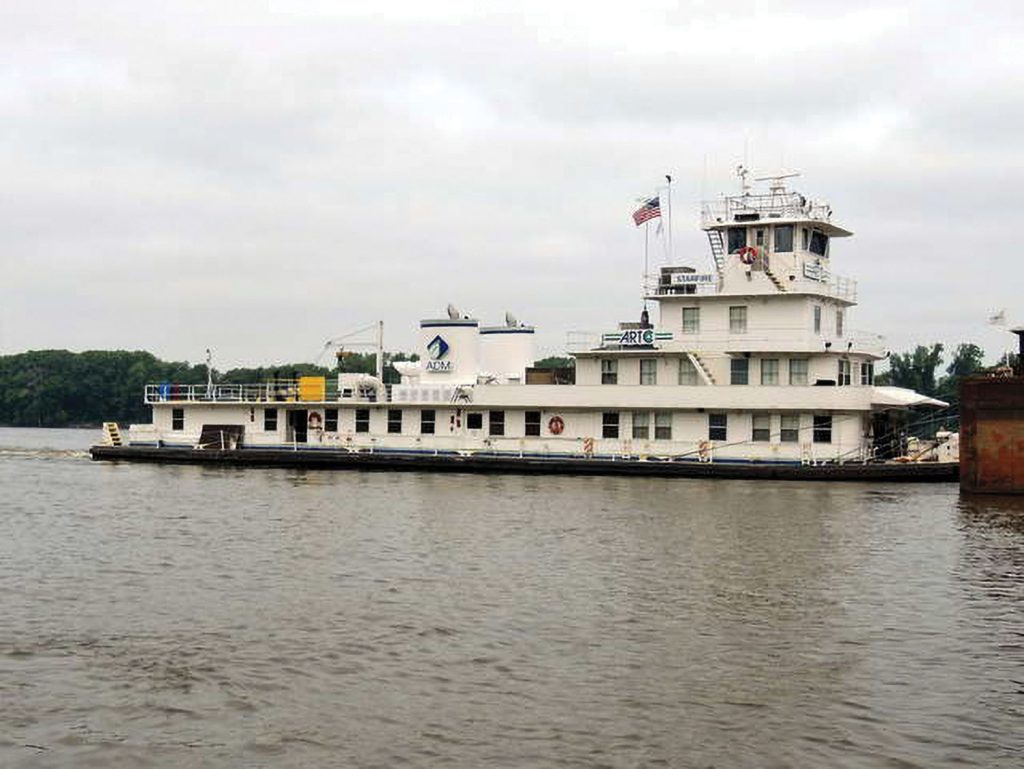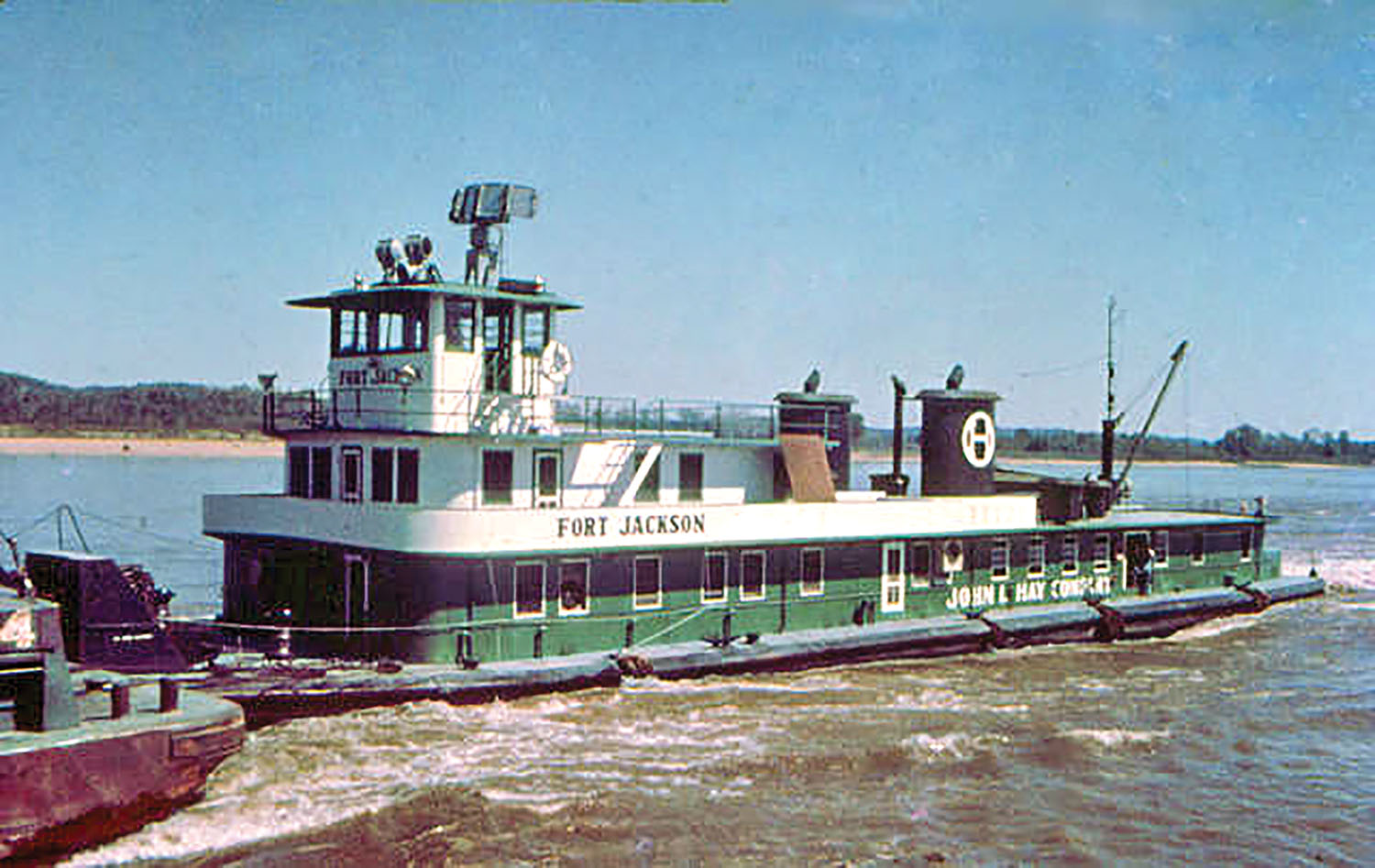The question of exactly when a vessel becomes an “old boat” and a fit subject for this column has been addressed before, and it was touched on specifically in the December 23, 1972, issue of The Waterways Journal, then more recently in the column dealing with the “Weirton Express” that appeared in the January 9, 2023, issue of the WJ. Lately we have been looking at boats from the 1930s, but once again we are prompted to feature an “old boat” that is alive, well and working daily.
A friend has been out of action for some months due to some medical issues but is now recovered and recently returned to active service under his license. He is piloting a towboat on the Upper Mississippi River as these words are being written. The boat he boarded when he came back to work is what prompted this particular column.
The John I. Hay Company of Chicago operated two steam sternwheel towboats in the mid to late 1930s. One of these was the former packet Betsy Ann, made famous by the writings of Capt. Frederick Way Jr., and the other was the Altair. By 1950, the two steamers had been dismantled, and owner listings of the Inland River Record indicated that the firm had six diesel vessels. The largest of these was the Fort Dearborn, a 3,000 hp. towboat that had been built by St. Louis Shipbuilding & Steel Company in 1947. In 1951, Hay took delivery of a near duplicate of the Fort Dearborn, also built by St. Louis Ship.
The March 21, 1951, issue of the WJ featured the new boat, named Fort Jackson, starting with a St. Louis Ship ad on the front cover that had a glamour shot of the vessel. In the detailed story on pages 9 and 10 the boat is extensively described, and photos depict the engineroom and pilothouse interiors. Photos also show the christening that was held on March 15, as well as the christening party that included the vessel sponsor, Mrs. John O. Jones, and her husband, who was a vice president of John I. Hay Company; Frank R. Markland, secretary-treasurer of the Hay firm; John I. Hay himself; and Herman T. Pott, the head of St. Louis Ship.
The WJ article said that while the boat looked nearly identical to the Fort Dearborn in appearance, the hull of the Fort Jackson was deeper, and it had larger propellers. Twin Fairbanks-Morse opposed-piston diesels coupled to Falk reverse-reduction gears provided 3,200 hp. at 720 rpm. The 102-inch propellers turned in kort nozzles, which thrust the wheel wash through St. Louis Ship patented “contraguide” rudders, all of which “are an indication of this boat’s tremendous push-power.” The hull, which had “the St. Louis Ship model-scow” type bow, was 156 by 35 feet and was 11 feet in depth.
Quarters were provided on the main deck for “four cooks and 14 crew members.” The galley contained an “oil burning range,” and the galley and “mess rooms are extremely large and well arranged.” On the upper deck were an officers’ lounge and rooms for the captain, pilot, chief engineer, two assistant engineers and two guests. For crew comfort, “Twelve-inch electric fans are provided in all quarters.” All doors and windows were also said to be “screened.”
At a time when diesel boats were being built or converted to pilothouse control of the engines, it was interesting to note that “Following the practice of the John I. Hay Company on its other boats, the main engines and gears are not pilothouse controlled but are controlled from a stand in the engineroom.” A mechanical engine order telegraph was mounted in the center of the pilothouse console by which the pilot would convey to the engineer what he wanted the engines to do. An RCA radar was also located in the pilothouse.
The Fort Jackson was officially delivered to the Hay company at Cairo on March 19, 1951, and served that concern until sold, along with other Hay floating stock, to A.L. Mechling Barge Line in 1963. In 1966 it was sold to V&E Towing Company, Cassville, Wis., and renamed Ray A. In November 1968, it was transferred to Wisconsin Barge Line, Cassville. In 1972, one of the F-M OP engines was replaced by a GM 16-645E2 diesel, and the horsepower was then listed as 3,400. The 1974 IRR listing for the boat shows that the other F-M was replaced by another GM engine in 1973, and the horsepower was again shown as 3,200. At some point in time the kort nozzles were removed.

Wisconsin Barge Line had renamed the boat Joseph Hendrick in December 1973. A third cabin was added after this renaming, and the pilothouse placed atop that. In January 1979 the name was changed to Starfire. In August 1988, it was merged into American River Transportation Company LLC, St. Louis. The boat is still in service today, some 72 years after it was built, and is operated by Inland Marine Service Inc., Hebron, Ky., for ARTCo.
Caption for top photo: The Fort Jackson as owned by John I. Hay on September 25, 1956. (Jeff Yates photo)
Capt. David Smith can be contacted at davidsmith1955obc@gmail.com.




